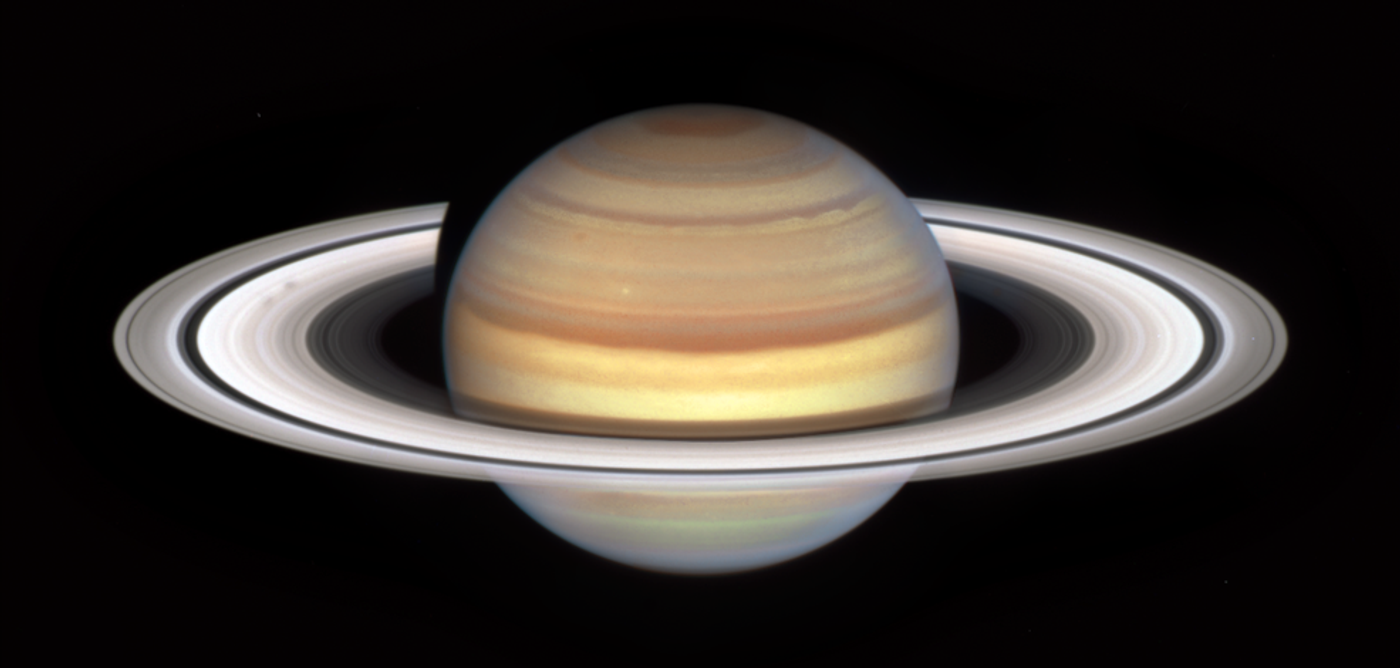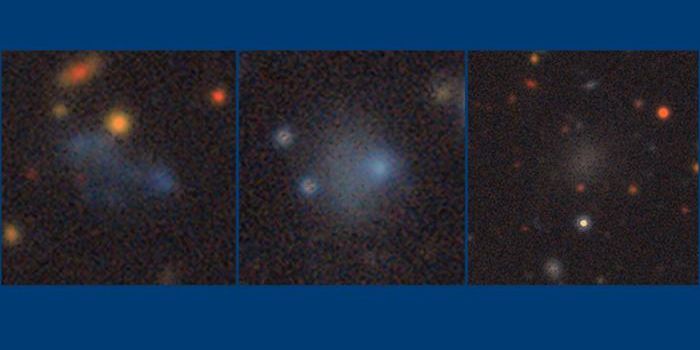NASA's Hubble Images "Spoke" Season Features of Saturn
NASA's Hubble Space Telescope images the start of Saturn's "spoke season" with the appearance of two smudgy spokes in the B ring (left in image). (Credit: NASA, ESA, and Amy Simon (NASA-GSFC); Image Processing: Alyssa Pagan (STScI))
Labroots recently explored the awesomeness of Saturn's rings, from their discovery by Galileo Galilei in 1610 to their in-depth and close-up observations from a variety of spacecraft, including NASA's Pioneer 11, Voyager 1 and 2, and Cassini, the last of which collected the most data on these ringed wonders. But, even though the Cassini mission ended in 2017, scientists are still using all the instruments they can to examine and study Saturn's rings.
This includes a recent study published in Geophysical Research Letters, where a team of researchers led by the NASA Goddard Space Flight Center examined images captured by NASA’s Hubble Space Telescope of Saturn, and more specifically the “spokes” within its rings, which are smudgy features that appear as Saturn’s autumnal equinox approaches on May 6, 2025. Saturn’s equinox occurs as the ringed planet is tilted edge-on towards the Sun, allowing for ideal observation of the spokes within its massive rings.
While Saturn has seasons just like the Earth, each “season” lasts almost eight years as opposed to only three months on Earth. This most recent 8-year period for observing the spokes began in 2021, and will peak on May 6, 2025.
"Thanks to Hubble's OPAL program, which is building an archive of data on the outer solar system planets, we will have longer dedicated time to study Saturn's spokes this season than ever before," Dr. Amy Simon, who is a NASA senior planetary scientist, head of the Hubble Outer Planet Atmospheres Legacy (OPAL) program, and lead author of the study, said in a statement.
Ever since the spokes were first observed in the 1980s by NASA’s Voyager mission, scientists have been attempting to reveal the secrets behind the spokes, specifically what causes them.
The current hypothesis behind the spoke’s origin is Saturn’s fluctuating magnetic field. This is because planetary magnetic fields produce an electrically charged environment due to their interaction with the solar wind, much like on Earth with the northern lights. Researchers hypothesize that the dust-sized icy particles that make up Saturn’s rings can become electrically charged, as well. This could result in these icy particles “levitating” above the much larger particles.
While the last equinox of Saturn occurred in 2009, it was able to be observed up-close thanks to NASA’s Cassini spacecraft. However, with that mission ending in 2017 and no spacecraft are currently orbiting Saturn, researchers have to rely on Hubble for their observations.
"Despite years of excellent observations by the Cassini mission, the precise beginning and duration of the spoke season is still unpredictable, rather like predicting the first storm during hurricane season," Dr. Simon said.
The goal of this research is to gain a better understanding of ring physics, overall, and Hubble’s OPAL program can provide data in visible light, infrared, and ultraviolet to help scientists construct a better model for the spoke phenomenon.
Sources: Labroots, Geophysical Research Letters, NASA
As always, keep doing science & keep looking up!









